Case Study: How We Recovered an Affiliate Website After Receiving a Penalty for Unnatural Links
In this SEO case study, I will describe how we quickly restored the organic traffic of a content website after a Google manual penalty.

The client approached us with a significant issue: their content affiliate website had completely lost its Google traffic in early March 2024. Google Search Console indicated that a manual penalty had been applied to the website for Unnatural Links.
The client’s website had been in existence for over 10 years, weathering numerous Google updates, but this time it was less fortunate. It’s worth noting that the website contains high-quality, expert-level content:
- “The Best …” articles
- Product Reviews
- Product Comparisons
Unlike many competitors, the content of this website is more appealing and the site itself inspires trust.
However, the backlink profile was in much worse shape. As a result, the website was hit with a manual penalty and was completely deindexed by Google, as confirmed by the ‘Unnatural Links to your site’ notification in the Manual Actions section of GSC.
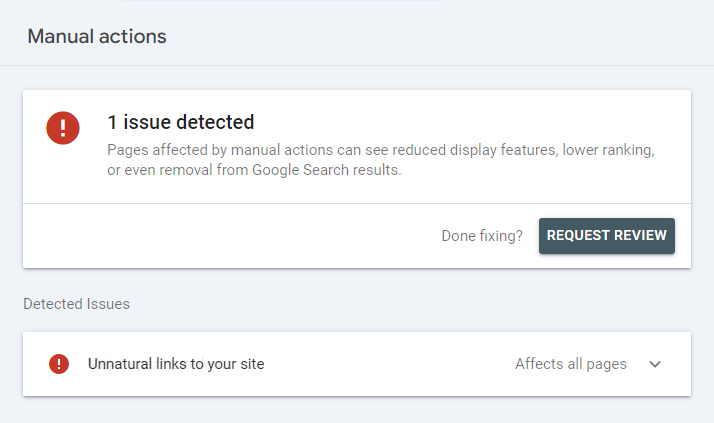
Our task was to remove the website from this manual penalty as quickly as possible, using all available resources.
What Data We Needed for the Task
At our request, the client provided us with read-only access to GA and GSC. Following our standard procedure, we also asked the client several questions regarding the link-building strategies they had employed.
Initially, the client acquired backlinks through Outreach and HARO strategies, but over time they shifted predominantly to purchasing guest and sponsored articles from link building brokers. This approach was easier and less time-consuming for them. However, it turned out to be a riskier decision in the long run.
How We Organized the Manual Penalty Recovery Work
By matching the date of the website’s traffic drop with Google updates, we determined that the website received a manual penalty following the release of the March 2024 Spam Update on March 5, 2024.
Although the March 2024 Spam Update primarily targeted websites using various spam content manipulations, it also penalized sites for using spammy links and link schemes.
We understood the cause of the penalty, which Google update preceded the penalty, and the link-building strategies the client had used. And we were well aware of the associated risks.
Our recovery strategy plan for the client’s website included the following steps:
- Collect a comprehensive list of backlinks.
- Conduct a backlink audit and categorize all links into five groups:
A. No risk links
B. Minimal risk
C. Low risk
D. Medium risk
E. High link
- Provide the client with recommendations for the physical removal of harmful links.
- Advise the client on how to use the disavow tool most effectively to avoid unnecessary delays.
Finding All Backlinks
At RecoveryForge, we use multiple SEO tools simultaneously to compile a comprehensive list of backlinks: SEO SpyGlass, Ahrefs, Serpstat, along with data from GA and GSC.
This approach enables us to find, if not all links, then almost all of them.
Our primary tool is SEO SpyGlass from SEO PowerSuite. Besides discovering links independently, SEO SpyGlass allows us to add more link sources, such as those from GSC and GA.
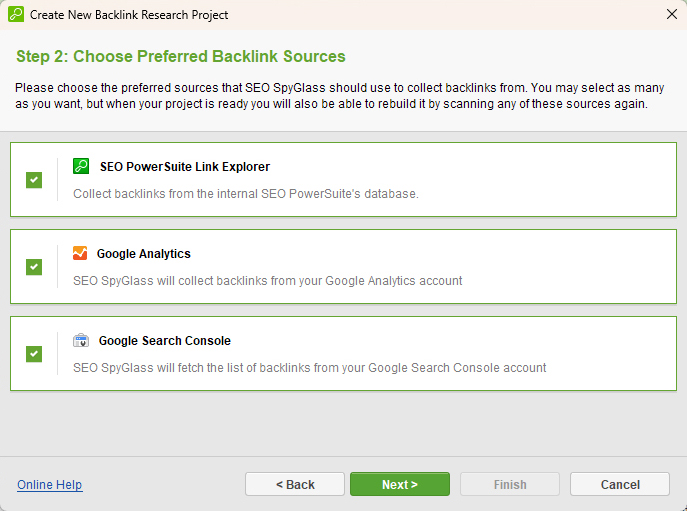
If needed, SEO SpyGlass also lets us manually add any backlinks from other sources and SEO tools.
As a result, we can consolidate all links into one interface, making it very convenient and significantly enhancing the efficiency and speed of the backlink audit.
Backlink Profile Audit
After loading all the links from various tools into SEO SpyGlass, we gained a complete picture of the backlink profile of this website.
The total number of backlinks found for the client’s website was 26.3K.
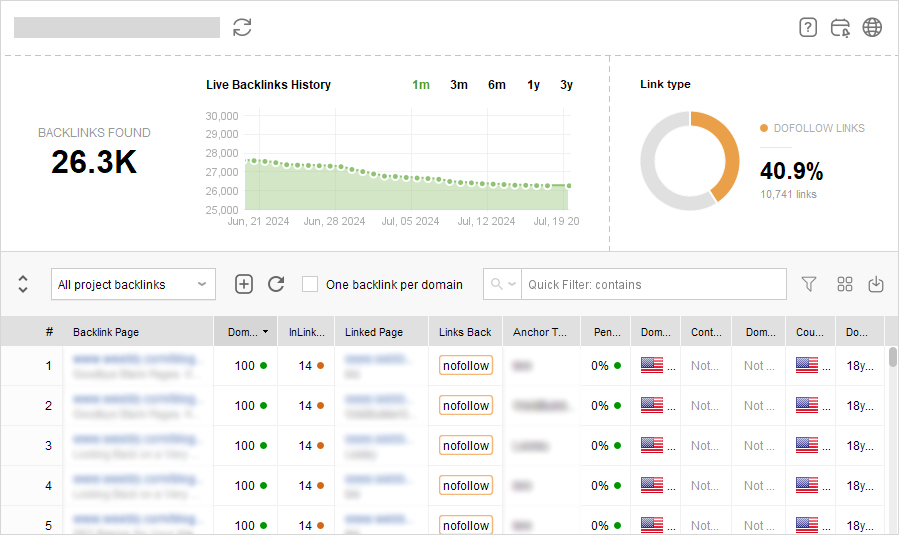
The first concerning factor was the significant disparity between the number of Dofollow and Nofollow links. Dofollow links accounted for 40.9% while Nofollow links were nearly 60%. Typically, a more natural backlink profile shows the opposite ratio.
The second issue was that many referring websites did not have US IP addresses. Many were hosted on servers in other countries (Russia, India, Vietnam, Turkey, and others), despite the client’s website targeting the American market. This was a clear indication of potentia problems.
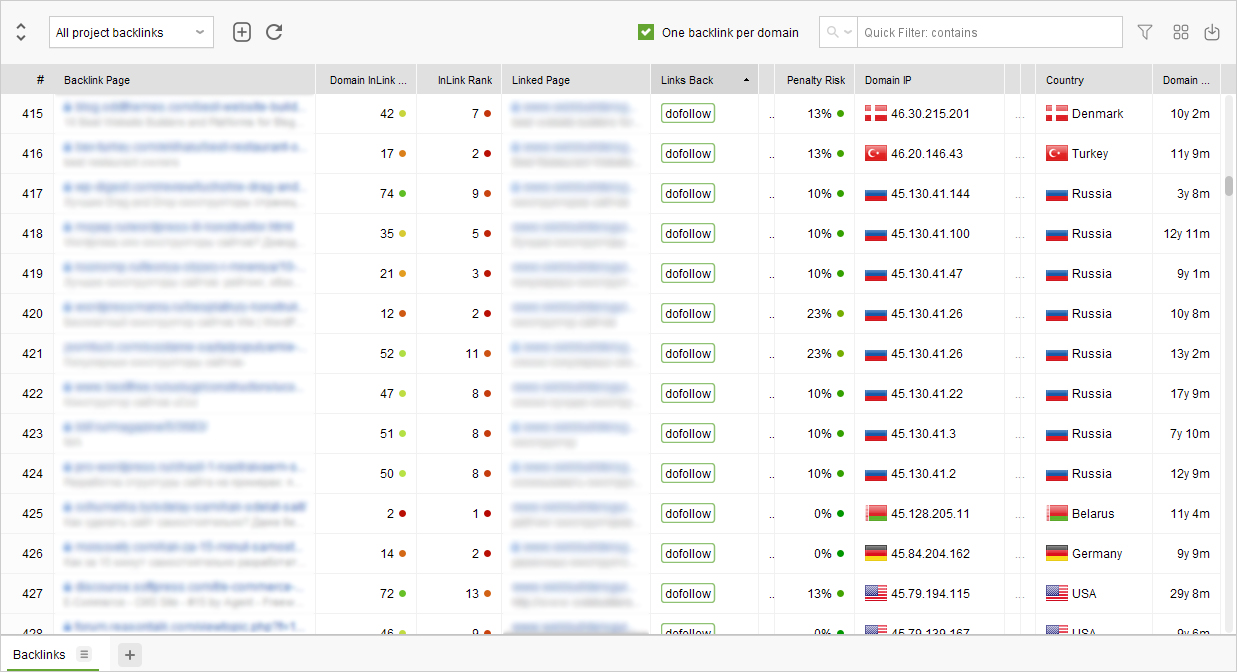
Third, we identified websites that no longer had search traffic and appeared to be primarily used for selling articles and backlinks.
By analyzing all the necessary data in a unified table, we quickly categorized links into A. No risk links and E. High-risk links.
Identifying these two opposite groups of links was straightforward, unlike the remaining three groups. To determine the links belonging to B. Minimal risk, C. Low risk, and D. Medium risk categories, we had to manually review each link to assess its risk level.
To assess the risk, we considered the following parameters:
- Relevance of the page
- Overall relevance of the website
- Visual trustworthiness of the website
- Domain Authority
- Domain InLink Rank
- Domain IP and Country
- Domain Age
- Anchor Text
For example, an ideal low-risk backlink would be placed in a relevant article on a website within the same niche as the client’s site. This website would look professional and not resemble those created solely for selling links. Typically, such a site would have high SEO metrics and be at least five years old.
Conversely, a high-risk link would display the opposite characteristics.
We paid special attention to links with business anchors, particularly if these anchors were exact matches for search queries typical of the niche.
It is important to note that we did not rely solely on the “Penalty Risk” parameter from SEO SpyGlass for our risk assessment. Our proprietary risk assessment system is more comprehensive and considers more factors than the standard “Penalty Risk” parameter. However, we used its value to confirm (or challenge) our own risk evaluation for each link.
Two Ways for Removing Harmful Links
After categorizing all five groups of links, we handed them over to the client, allowing them to contact the link owners (or link building brokers) and request the removal of the links they deemed necessary.
We generally recommend removing links using one of two methods:
- E. High links + D. Medium risk
If the penalty is not lifted, proceed to remove C. Low-risk links
If the penalty is still not lifted, proceed to remove B. Minimal-risk links
- E. High links + D. Medium risk + C. Low risk
If the penalty is still not lifted, proceed to remove B. Minimal-risk links
The client of this affiliate website chose the second method, as they did not want to waste time in case their initial reconsideration request was rejected.
Despite the availability of the Google Disavow Links Tool, we advise our clients to use this tool only when it is physically impossible to remove the links. For example, if the website owner/manager does not respond to our removal requests.
Over the years, we have developed our own communication system with website owners that yields a higher response rate. Using this method, website owners are more likely to respond to our emails and typically agree to remove bad backlinks from their sites.
The client of this affiliate website used our communication method and managed to remove about one-third of all spammy and toxic links. This is an excellent result, as it is above the average removal rate.
Using the Disavow Links Tool
The remaining harmful links that could not be physically removed were added to the Disavow Links Tool by the client. We provided the client with a step-by-step guide to expedite the process of the Disavow Links Tool.
Instead of waiting for months, it took only a few weeks to fully disavow the links. For obvious reasons, we cannot disclose the details of this process in this case study.
Results
Approximately five weeks after submitting the reconsideration request in GSC, the website was freed from the manual penalty.
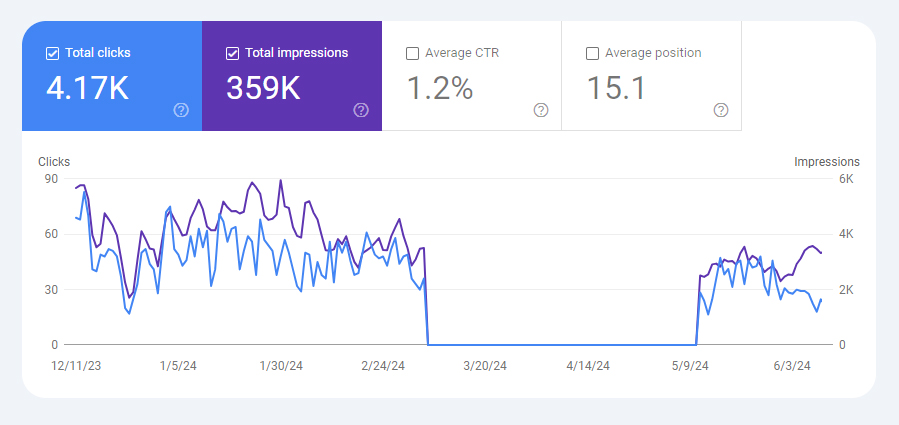
Ivan Bogovik is the founder of RecoveryForge, an SEO agency focused on penalty recovery. With over 16 years in the SEO field, Ivan has extensive experience helping websites recover from Google penalties like Penguin, Panda, and other algorithmic updates. Since 2014, he has successfully guided many websites back to health and regularly shares his insights at SEO events and webinars.

